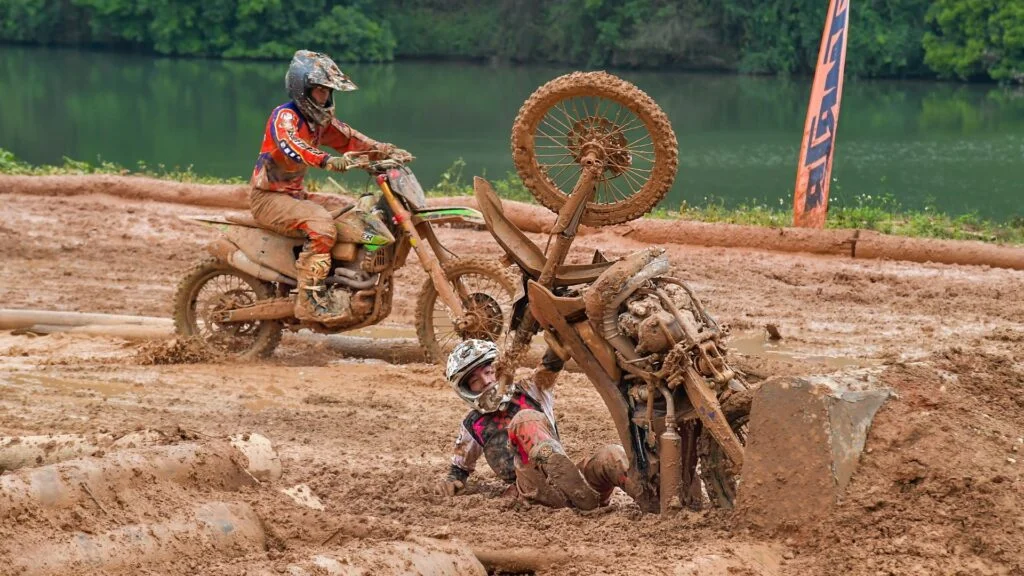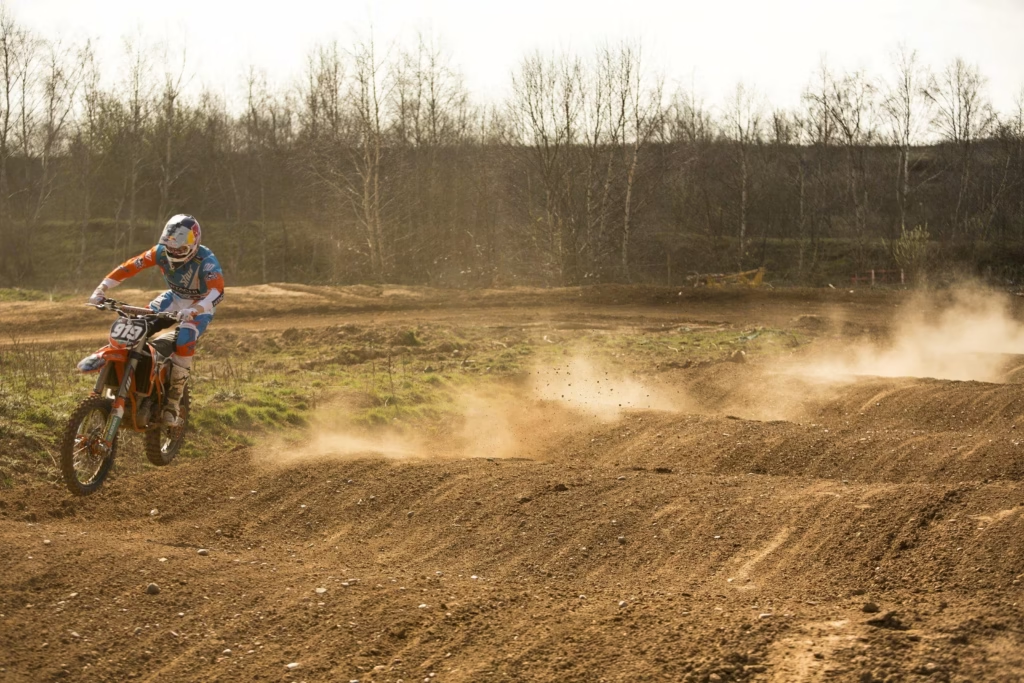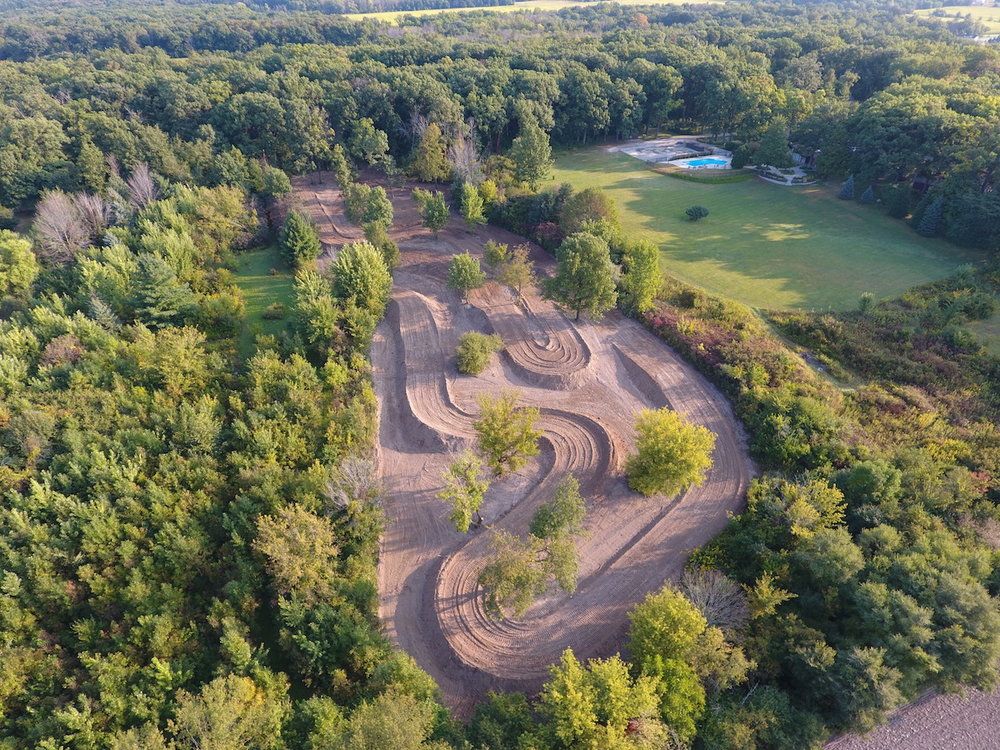
Discover how to build a dirt bike track from scratch in your backyard or land. Learn about layout, safety, jumps, tools, and soil types to create a perfect motocross course.
Step-by-Step Guide: How to Build a Dirt Bike Track
1. Plan Your Layout
Start by sketching your track layout on paper or use a digital tool. Think about:
- Rider skill level
- Available space
- Obstacle types (jumps, berms, whoops)
Pro Tip: Include both technical and flowing sections to keep the track fun.
2. Choose the Right Location
Pick flat, open land that’s away from neighbors to reduce noise complaints. Avoid areas with poor drainage.
3. Prepare the Ground
Clear all debris, rocks, bushes, and trees. Then, flatten the surface as much as possible using a skid steer.
4. Design Jumps and Obstacles
Plan where you’ll place jumps, berms (banked turns), tabletops, and whoops (small bumps).
| Obstacle | Suggested Size |
| Tabletop jump | 4 ft high, 15 ft long |
| Whoops section | 1–2 ft high, 3 ft apart |
| Berms | 3 ft high, banked at 45° |
5. Dig and Shape the Track
Use heavy machinery to dig out the path and build features. Shape jumps and berms carefully using dirt, not sand or clay alone.
6. Water and Compact the Soil
Moist soil is easier to shape and compact. Water the entire track, then pack it down with a roller or driving over it repeatedly.
7. Test Ride and Adjust
Take a test ride to evaluate flow, spacing, and safety. Make adjustments to jump heights or corner radii as needed.
8. Add Markers and Barriers
Install markers to guide riders and barriers to keep spectators safe.
Why Build Your Own Dirt Bike Track?
If you love dirt biking and want to ride anytime you like, building a dirt bike track at home is a dream come true. It’s not only a thrilling project but also an excellent way to improve your riding skills. More importantly, it’s a fun weekend activity that can be tailored to your skill level and space.
Whether you’re a beginner or a pro, this “how to build a dirt bike track” guide will walk you through every step with useful tips, safety advice, and expert techniques.

What You’ll Need before You Start
Before jumping into digging and shaping your track, gather the necessary tools and assess your space.
Essential Tools:
- Shovel or dirt rake
- Compact tractor or skid steer (for large builds)
- Water hose or water tank
- Measuring tape or laser level
- Safety gear (gloves, boots, goggles)
Optional (But Helpful):
- Track layout software
- Surveyor’s tape
- Soil testing kit
Transition Words That Help You Flow
To make the process smoother, first sketch your design. Next, prepare the land and remove obstacles. Then, use your equipment to shape jumps and berms. Afterward, test ride the track and refine it. Finally, enjoy the thrill of riding your custom dirt bike course!
Tips for a Safe and Fun Dirt Bike Track
- Always wear protective gear
- Avoid steep landings to reduce injury risk
- Add drainage ditches to prevent flooding
- Keep tools and fuel stored safely away from the track
- Regularly maintain the track to prevent ruts and erosion
How Much Does It Cost to Build a Dirt Bike Track?
| Type | Estimated Cost |
| Backyard track (basic) | $300–$1,000 |
| Advanced track with machinery | $2,000–$5,000+ |
Costs vary based on land size, materials, and whether you rent machinery or do it manually.

Frequently Asked Questions (FAQs)
Q1: How much land do I need to build a dirt bike track?
A: You can build a small practice track on as little as 1/4 acre. For a full motocross experience, 1–5 acres is ideal.
Q2: What type of soil is best for a dirt bike track?
A: Loamy soil with a mix of sand and clay offers the best traction and durability.
Q3: Do I need a permit to build a dirt bike track?
A: In some areas, yes. Always check local zoning laws before starting construction.
Q4: How long does it take to build a track?
A: A basic track can be built in 1–3 days, while a more complex one may take a week or more.
Q5: How do I keep the track in good condition?
A: Regular watering, compacting, and reshaping are essential. Check for erosion and repair ruts promptly.
Q6: Can I ride on my dirt track anytime?
A: Be mindful of noise restrictions and neighbors. Consider installing sound barriers if needed.
Conclusion: Get Ready to Ride
Now that you’ve learned how to build a dirt bike track, it’s time to take action. With the right planning, tools, and safety measures, you can create an awesome backyard motocross playground. Don’t rush—take your time to build a track that’s both fun and safe.


